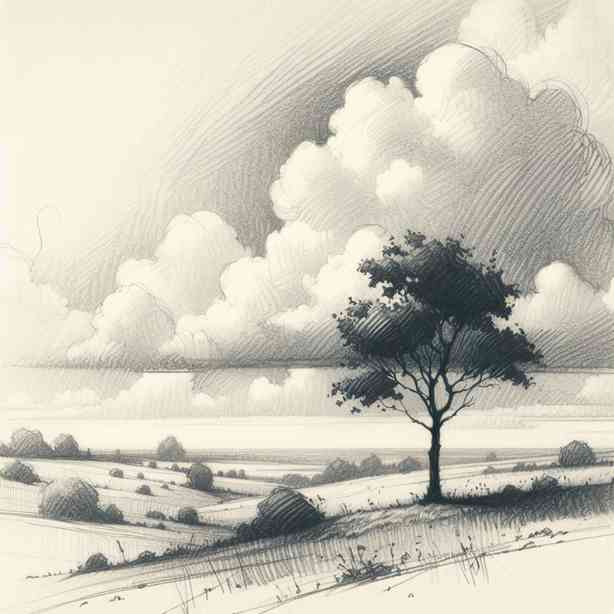
In the fast-paced world we live in, the importance of creativity and expression cannot be overstated. Often, we associate art with hours of painstaking labor. However, there are moments when the simplest of creations can leave an impact that resonates long after they’ve been made. One such instance is the story of a sketch that took merely three minutes to create yet remains etched in the minds of those who witnessed it. This brief yet powerful artistic expression serves as a reminder that art does not always have to be elaborate to evoke deep emotions or convey profound messages.
The allure of a quick sketch lies in its spontaneity. When artists engage in rapid creation, they often draw upon raw instincts and emotions. This immediacy can result in a piece that encapsulates genuine feelings, offering a more authentic connection to the audience. Consider a scenario where an artist sits in a bustling café, surrounded by the hum of everyday life. In just three minutes, they may capture the essence of a moment—the laughter of friends sharing stories, the intimate gaze between lovers, or even the solitude of a reflective individual. Such sketches can transcend the limitations of time, allowing viewers to immerse themselves in fleeting experiences frozen in graphite or ink.
Moreover, quick sketches invite viewers to appreciate the beauty of imperfection. In a world obsessed with perfectionism, these fast creations celebrate spontaneity and the freedom of expression. They remind us that art is not solely about meticulous details or flawless execution; rather, it is often about the emotions and ideas that flow through the artist’s mind in a matter of moments. This perspective encourages budding artists to let go of their fears of imperfection and embrace the chance to create without the constraints of expectation.
The narrative around this three-minute sketch also highlights the significance of context. Often, the stories behind a piece or the environment in which it was created can imbue it with additional layers of meaning. For instance, a quick drawing captured during a thunderous applause at a performance can evoke a sense of joy and celebration. In contrast, a sketch done on a long subway ride, surrounded by strangers, may reflect feelings of isolation or contemplation. Thus, the context lends depth to the artwork, allowing it to resonate differently with various audiences.
Art is also a powerful vehicle for social commentary, and quick sketches can be remarkably effective in this regard. An artist can convey a poignant critique of societal issues in mere minutes, sparking conversations and provoking thought. Whether tackling themes of inequality, environmental concerns, or the human condition, these brief portrayals can articulate sentiments that may otherwise be overlooked. In our increasingly visual culture, where attention spans are dwindling, quick sketches can serve as impactful catalysts for dialogue and reflection.
The magic of a three-minute sketch extends beyond the act of creation itself; it lies in its ability to communicate and connect. Viewers are often drawn to the immediacy and simplicity of such sketches, as they invite them to engage with the artwork on a personal level. Unlike more elaborate pieces that may require extended contemplation, a quick sketch can evoke an instant reaction, prompting the audience to reflect on their own experiences and feelings. This immediate engagement fosters a sense of community and shared understanding, bridging the gap between artist and observer.
Furthermore, the process of creating a rapid sketch can be liberating for the artist. It encourages experimentation and the exploration of different styles without the pressure of perfection. When artists engage in such exercises, they often discover new ways of seeing the world around them. This exploration can lead to unexpected discoveries, evolving techniques that may reinvigorate their artistic practice. As such, these quick sketches become valuable tools for growth and innovation within an artist’s journey.
When we also consider the digital age, the ease with which sketches can be shared via social media platforms dramatically amplifies their reach and influence. The instantaneous nature of sharing works strengthens the connection between artists and audiences, allowing for immediate feedback and interaction. This digital dialogue can help artists refine their skills and further inspire them to create. In fact, a three-minute sketch can turn into a viral sensation, captivating hundreds, if not thousands, of viewers, and forging connections that extend far beyond the gallery walls.
Reflecting on this phenomenon, it becomes clear that the significance of a quick sketch transcends its simplicity. It is an embodiment of creativity, emotion, and shared human experience. Each stroke holds the potential to reveal a deeper narrative, to serve as an impetus for change, or to simply provide a fleeting moment of beauty in an otherwise hectic day. The true power of art lies in its ability to resonate with individuals, regardless of the time or effort invested in its creation.
In conclusion, the three-minute sketch serves as a reminder that art exists in countless forms, often flourishing in moments of spontaneity. It holds the potential to bridge gaps, spark conversations, and inspire individuals across cultures and backgrounds. The lessons learned from rapid sketches challenge our perceptions of artistry and invite us to appreciate the beauty of the moment. As we navigate an increasingly complex world, let us celebrate the power of art, no matter how fleeting, and recognize the profound impact that even the simplest creations can have on our collective conscience. Thus, the next time you encounter a piece of art—be it a carefully crafted masterpiece or a hasty doodle—remember to pause and appreciate the story it tells, for often, the simplest expressions leave the most enduring impressions.


